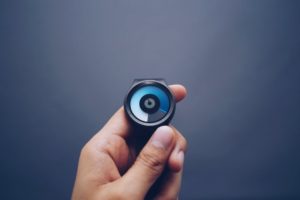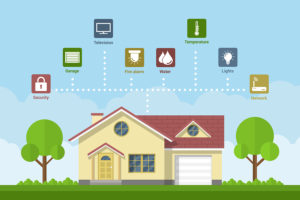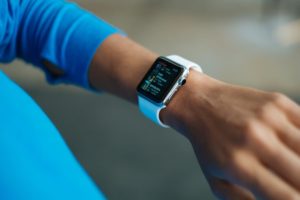Securing smart devices and protecting personal information
We live in a world of smart cities, connected devices, and digitized records. Smart devices allow us stay connected and updated on what is happening around the world, and help us keep up with our fast-paced lives. Although smart devices are immensely useful, they are fueled by our personal information, which can be dangerous. By providing your smart devices with information like your shopping preferences or address, they are able to monitor your activity and save personal data. For example, some connected devices, such as the Echo and Alexa, work by listening to audio cues and spoken phrases to provide their users with a helpful responses. These devices can help us create a shopping list, call a loved one, play our favorite song, and more, but as they are always listening and monitoring what we say, it can be difficult to know how to protect our information from security threats. With this in mind, it is important to understand how to use these cutting-edge devices in a safe and secure way.
What is the Internet of Things (IoT)?
The Internet of Things (IoT) refers to devices that can connect to the internet while collecting, analyzing, and sharing data. A few examples of IoT devices could be:
- Fitness trackers (Ex. FitBit, Moov)
- Smart watches
- Smart locks
- Wi-Fi enabled light bulbs
- Connected thermostats
- Smart clothing
- Wi-fi enabled video game consoles
- GPS devices

While smart devices are useful for monitoring and improving our everyday lives, it’s important to keep in mind that they are still susceptible to potential security breaches and hacks. Here are some simple ways to keep your information safe while using smart devices:
- Set up Two-Factor Authentication
- Two-factor authentication means going beyond creating a username and password and also providing additional authentication information sent to you from a separate device. For example, when logging into Twitter, there is an additional code sent to your phone that is needed to log in on your computer. This way, even if someone knows your password, you are the only one able to log into your account. Many devices and apps have this built-in these days, but be sure to enable it for all accounts/apps when possible.
- Keep your devices and apps up-to-date
- When an official software update becomes available for your app or device, download it! These updates often contain security patches and bug fixes to prevent potential security issues.
- Personalize usernames and passwords
- Most devices come with a default username and password that hackers can easily crack. For example, most wireless routers have login credentials on a sticker on the back of the device which can easily be accessed and is not private. Be sure to create a secure username and password that only you know.
Although smart devices can threaten our data and security, they can make our lives easier and there are many simple ways to use these devices safely. Along with taking precautionary measures such as using two factor authentication, updating your device, and creating personalized usernames and passwords, it is important to be smart and cautious while using these devices.
For more cybersecurity tips. check out last week’s article here on the Elon Technology Blog, and stay tuned next week for a National Security Month recap article! Don’t forget to look out for #ElonSecure on Twitter for even more tips.




 Follow
Follow